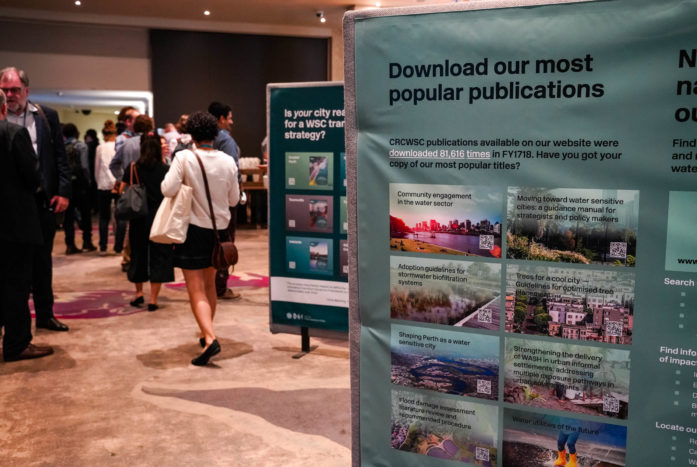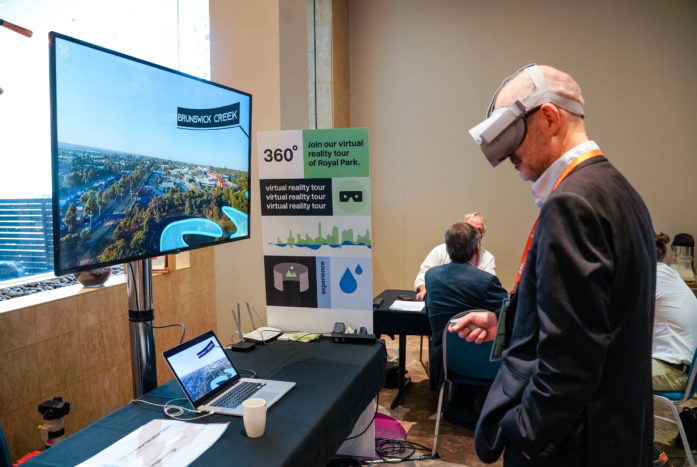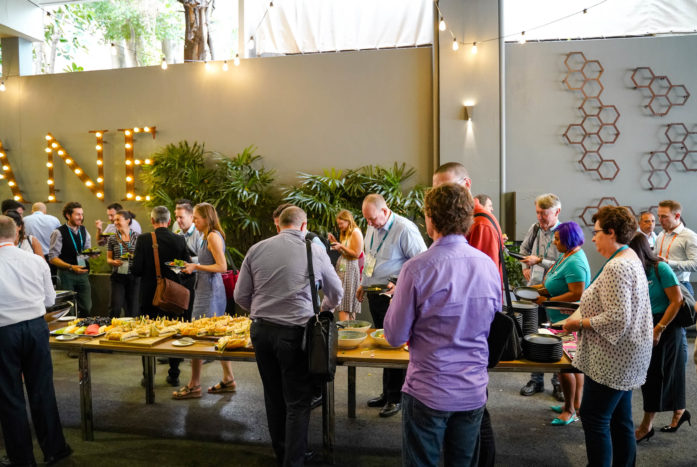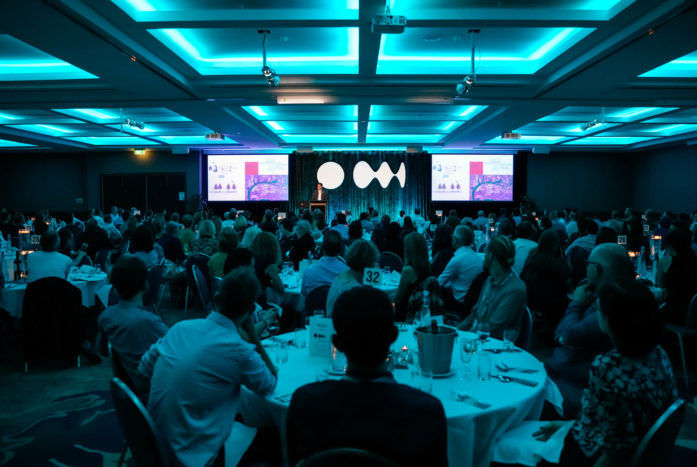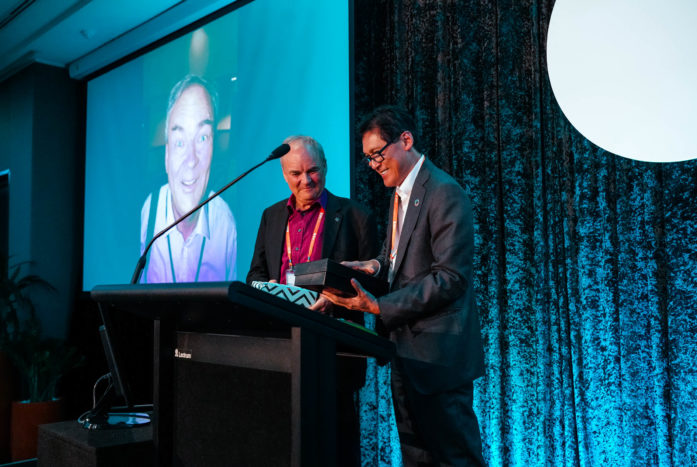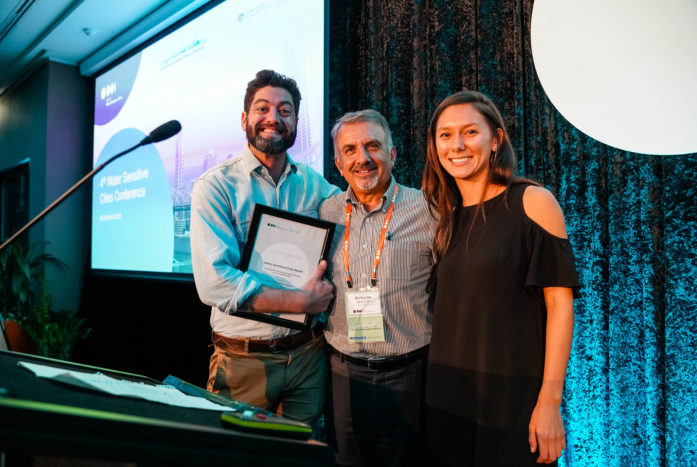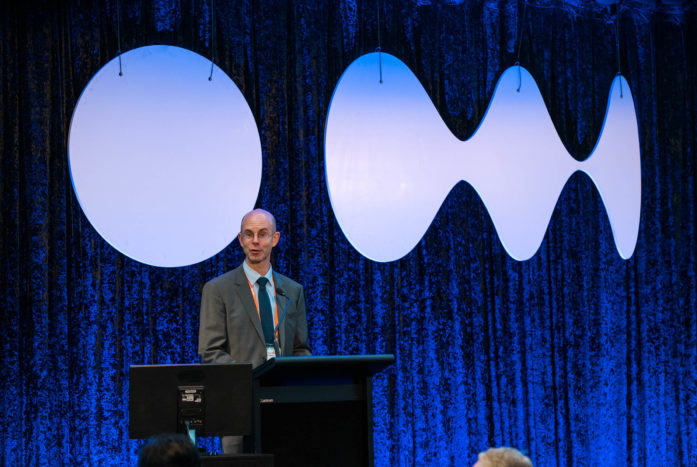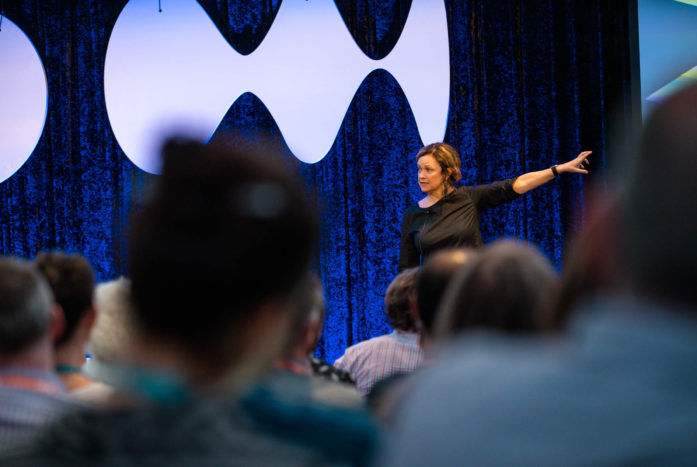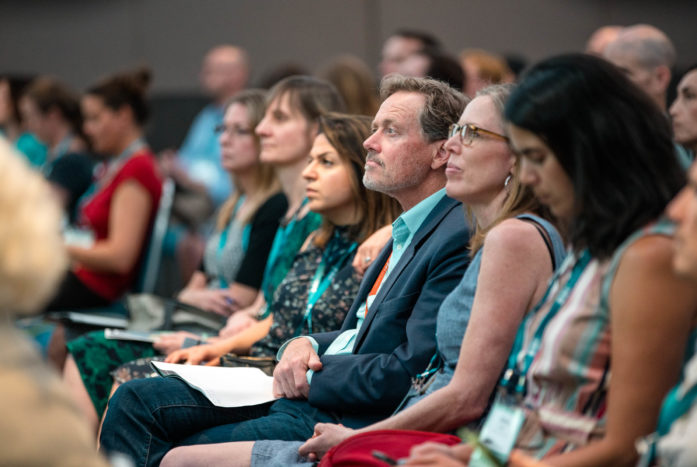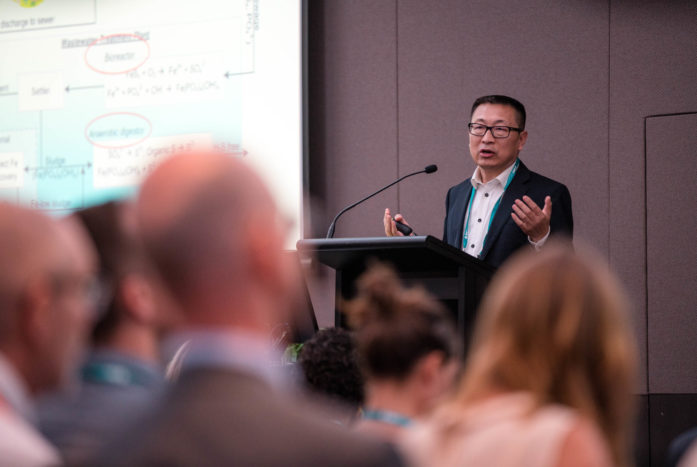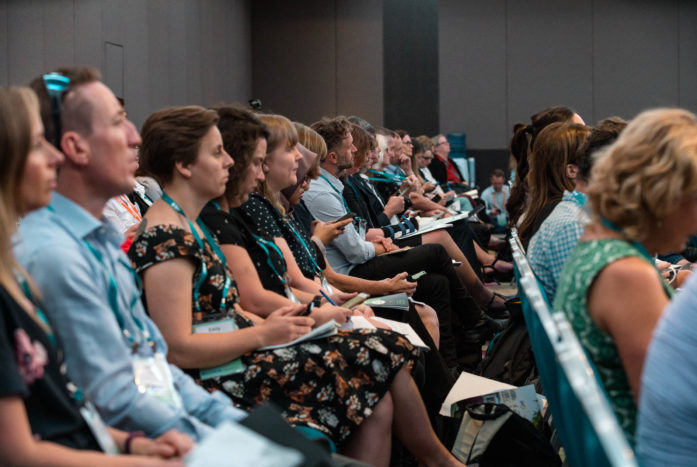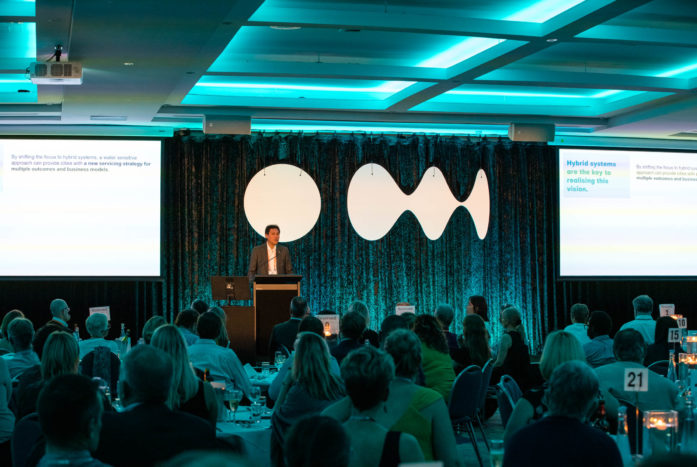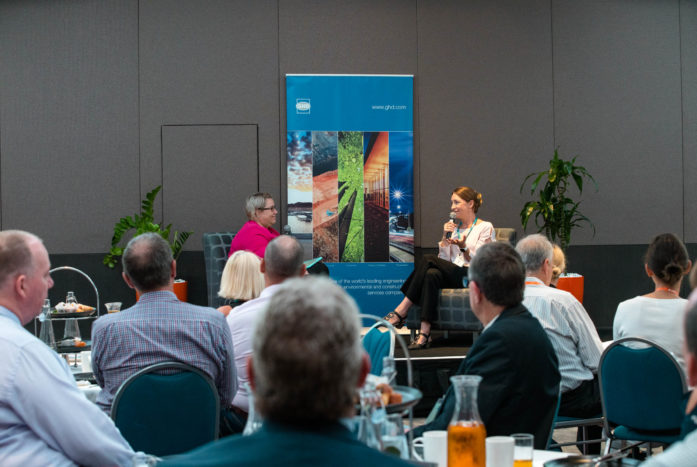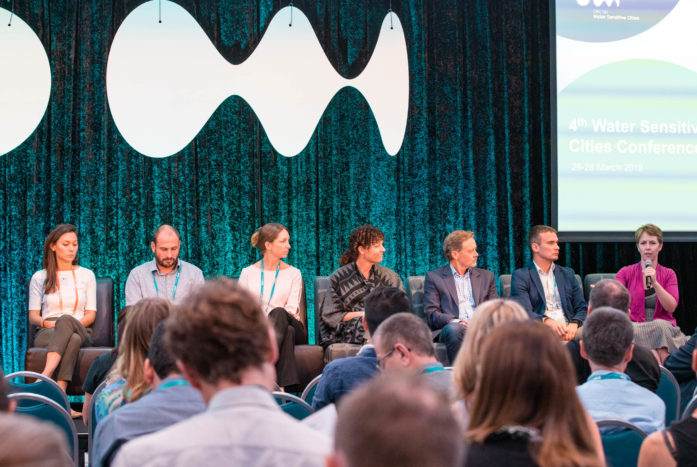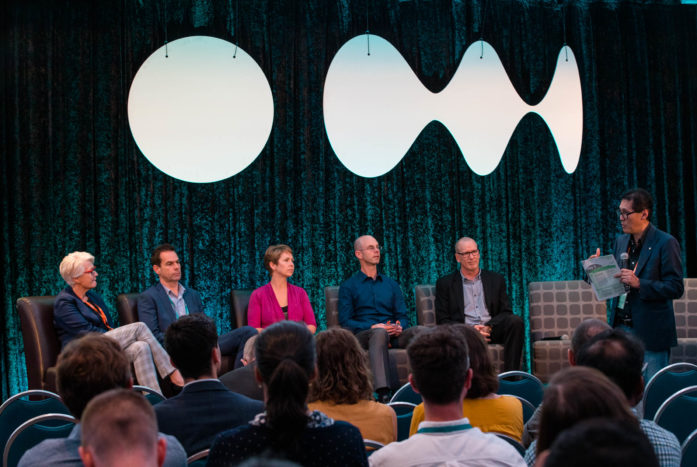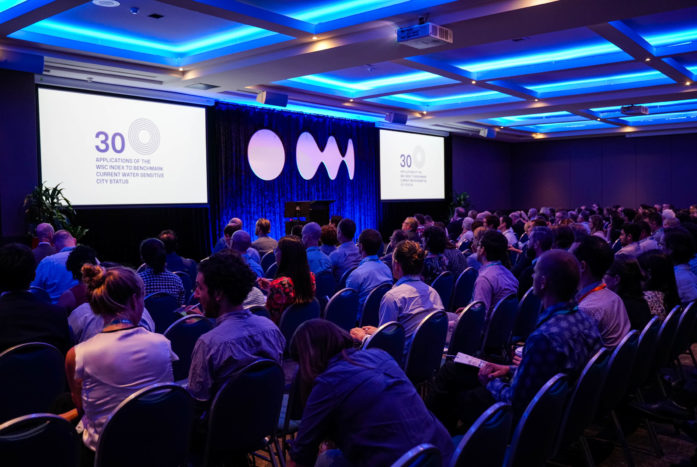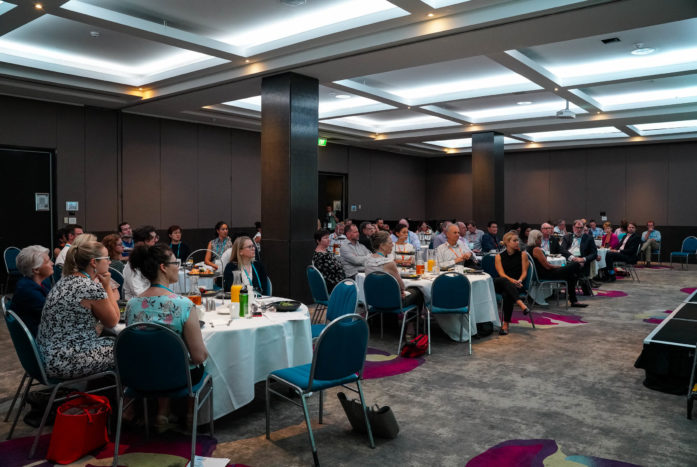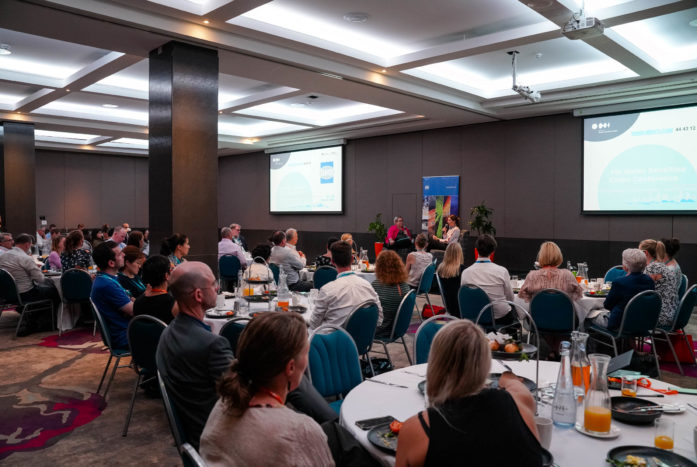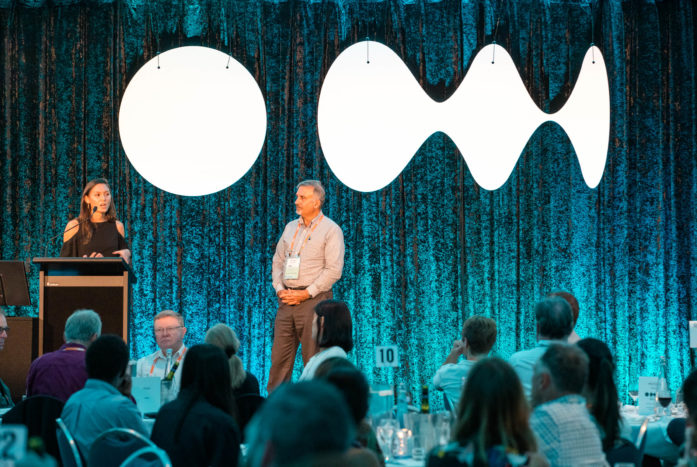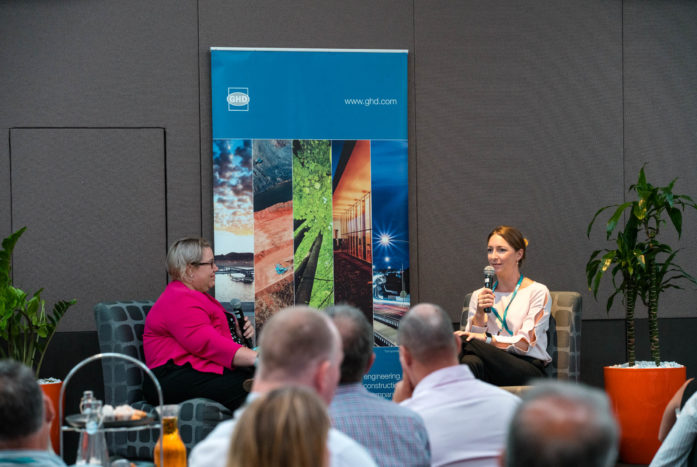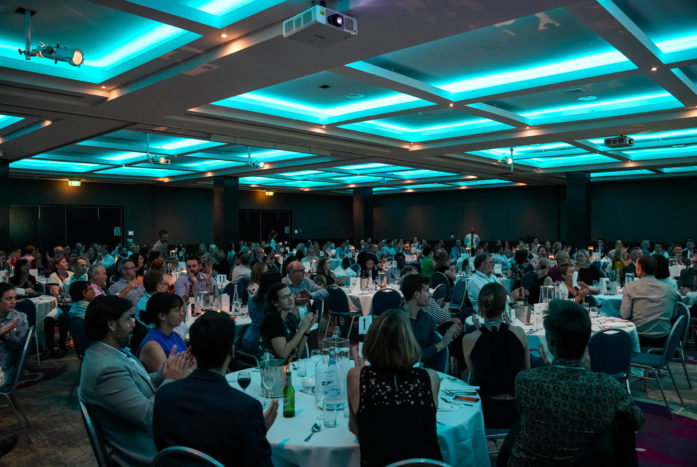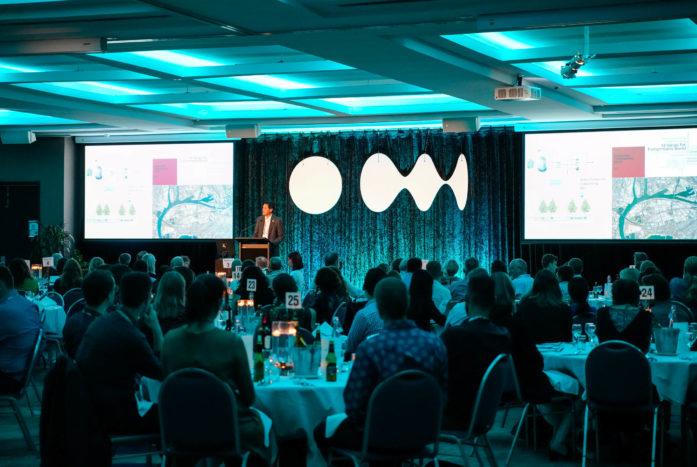Together with our partners, we’re delivering the transition to water sensitive cities
The CRC for Water Sensitive Cities has played a central role in delivering water sensitive projects on the ground. It’s particularly instrumental in establishing the connections and relationships that convert good and innovative ideas into practice. That’s one of the recurring messages we heard time and again from presenters at our 4th Water Sensitive Cities Conference, about delivering the transition to water sensitive cities.
As a Cooperative Research Centre, this message was heartening to hear, because it means we are delivering on our promise. The research and knowledge generation are critical. But as Professor Zhiguo Yuan (The University of Queensland) explained in his welcome message to conference delegates, “Water management is a complex problem and needs multidisciplinary and integrated solutions. It’s not just about technology—that’s only one part of the solution.” Collaborating, co-creating, building relationships and engaging stakeholders is the other part of the solution.
From the start, conference speakers challenged delegates to look at things differently. Keynote Caroline Stalker (Design Director (Urban) and Principal at Arup Australasia) asked why we are still designing 20th Century cities. Rather than retaining that dated approach, which divorces us from nature, Caroline discussed ways we can reconnect natural systems within high density areas, imploring "The greater the density, the greater the green.” We can harness vegetation to cool our cities, filter water and the air, and improve human health. Pleasingly, developers are interested in the commercial value of buildings that create seams of green throughout our cities.
Our other keynote, Adam Fennessy (Partner–Advisory, Government and Public Sector; Oceania Leader–Future Cities, EY), built on this theme of private sector involvement in creating cities of the future. Globally, we have an infrastructure gap of USD15 trillion. But rather than focus on the size of the challenge, Adam encouraged everyone to consider the size of the opportunity, particularly for public–private investments in infrastructure. Solutions to complex challenges require new thinking that’s based on collaboration—and collaboration that leads to successful on-ground projects is at the heart of the CRCWSC’s activities.
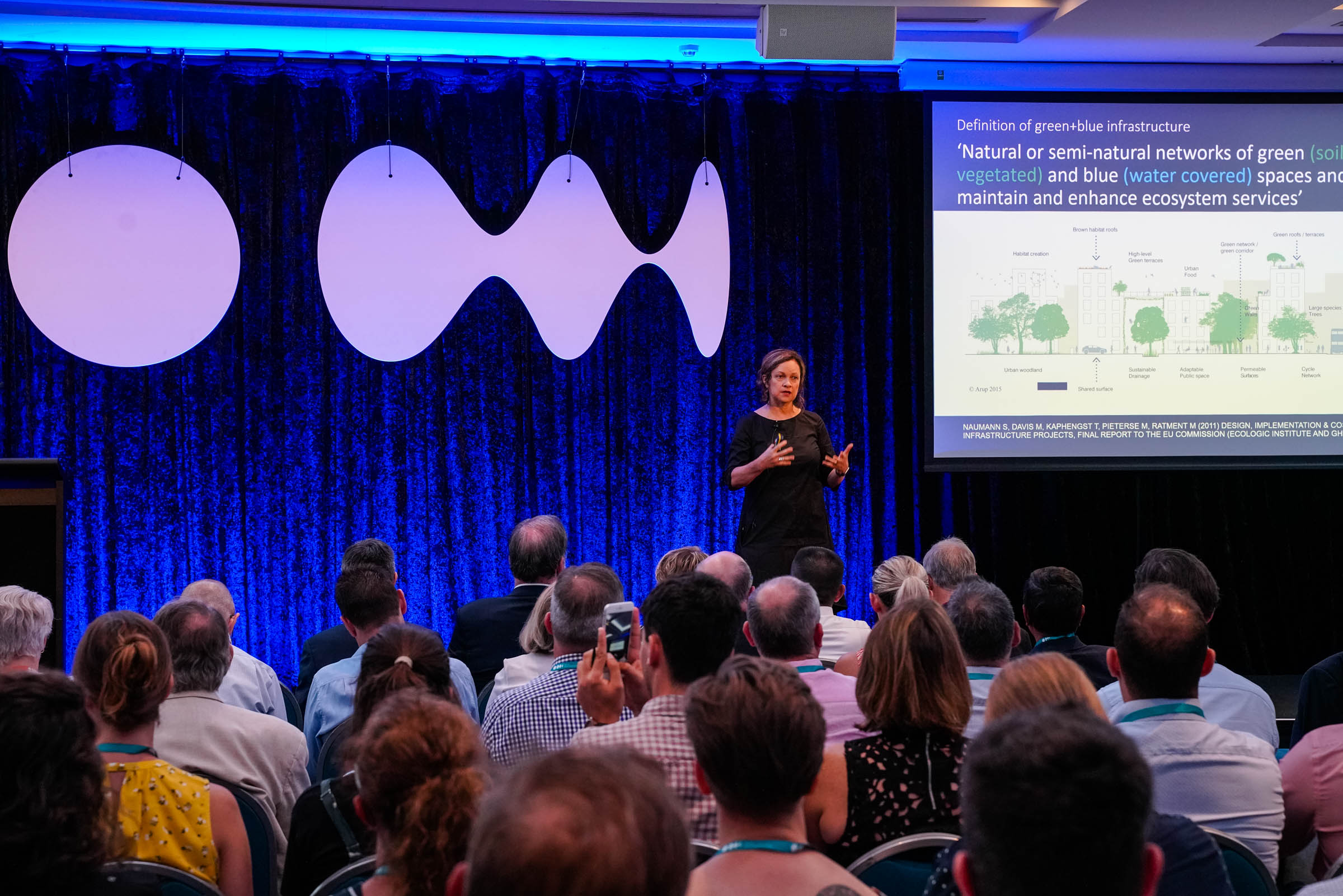
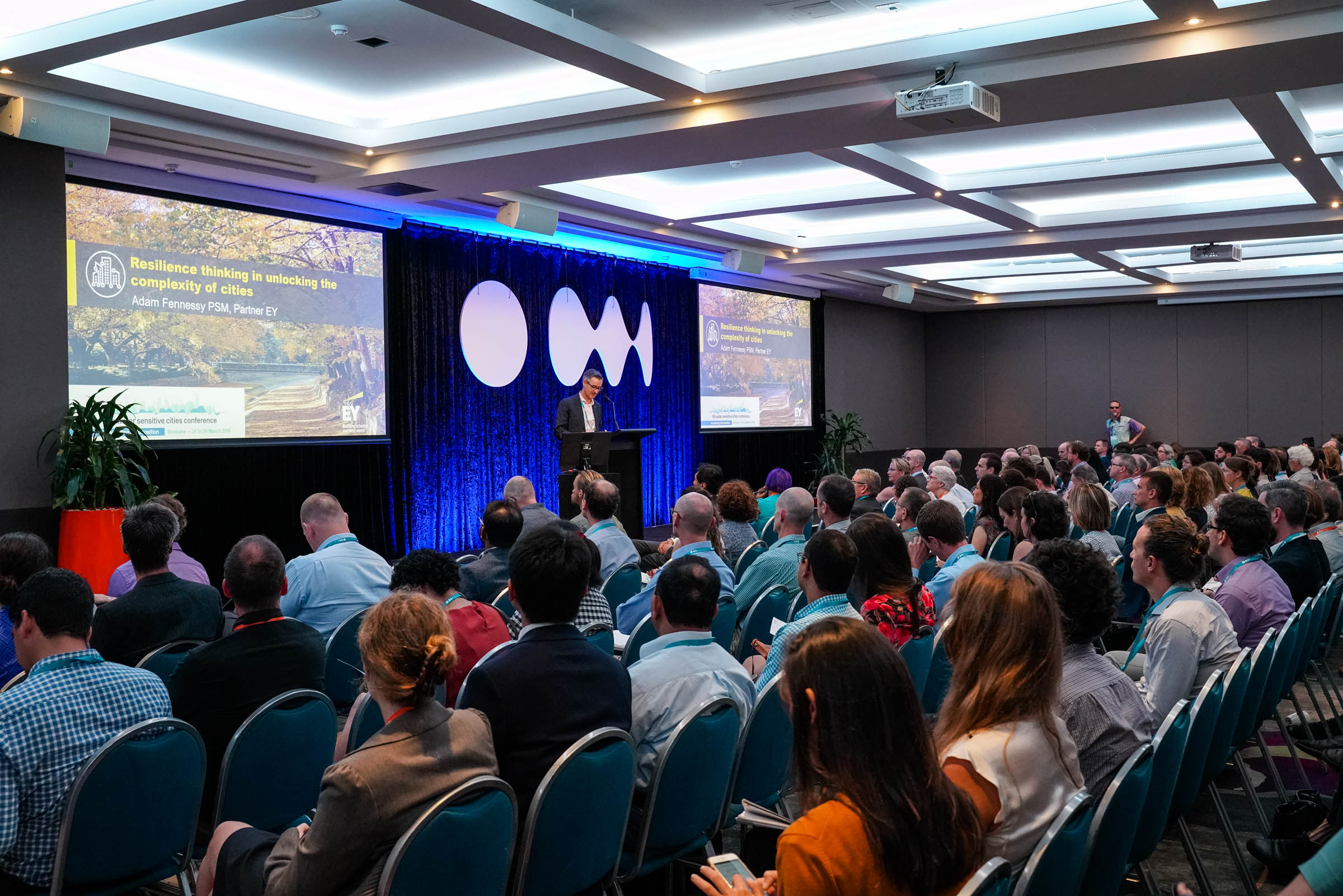
With the 244 conference delegates primed and eager for change, session presenters got down to the nitty gritty of demonstrating how we can move beyond business as usual. Each session addressed a theme, with presenters discussing various aspects of each theme:
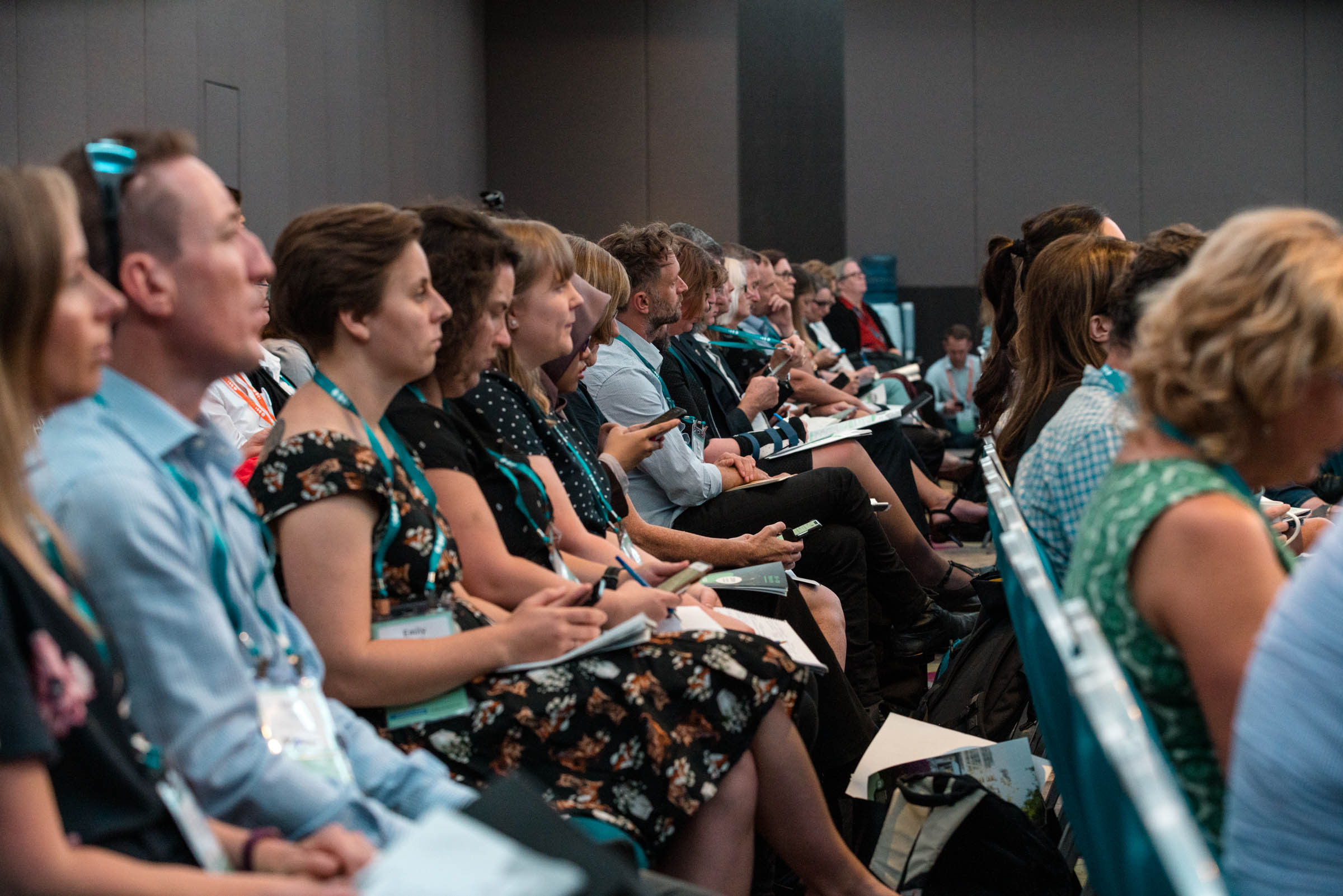
- City cooling (session 2A)—The impacts of urban heat are wide ranging and include mental health effects. This important session addressed progress in urban heat modelling (including in Amaravati, India) and blue–green infrastructure planning and solutions. Presenters addressed the need to unite urban green thinking with urban planning, so heat stressed areas can become more liveable. They also agreed it’s important to take the community on the water ‘journey’, and encourage decision makers to act at every scale.
- Resources, innovation and efficiency (session 2B)—Presenters outlined new technologies that can improve water quality, recover resources from waste, create new product streams, extend the life of expensive and long-lived infrastructure, and reduce the costs of providing urban water services.
- Flood resilience (session 3A)—The big messages were that the flood story is cross disciplinary and multi-spatial, and we need to move towards risk-based planning and risk-based urban design to achieve greater flood resilience. Presenters agreed a huge opportunity for cities lies at the nexus between urban planning, standards, and community resilience.
- Communities (session 3B)—Presenters discussed ways of engaging community members and other stakeholders. Stakeholders and communities are diverse, so we need lots of different approaches to reach all the different stakeholders. Champions play a valuable role in creating and maintaining momentum for change, but not everyone is interested in water. It takes time to cultivate the relationships and trust between people and organisations, but those relationships are necessary for success.
- Transitions journeys (session 4)—Presenters spoke about the transitions journeys for the Gold Coast, Perth and Kunshan (China). Importantly, projects in these cities show that water sensitive approaches improve urban water services and deliver other services. On the Gold Coast, repairing degraded riverbanks not only improves the quality of its canals and waterways, it creates public green spaces that benefit the community more broadly. Blue–green infrastructure in Kunshan is managing flood risks and creating urban transport corridors that encourage active transport. And Perth is using an informal network of key stakeholders to drive and implement the city’s water sensitive vision.
- Integrated platforms for city transformation (session 5)—Presenters showcased the three water sensitive cities facilitating platforms: the Transition Platform (Enabling), the City-shaping Platform (Translating), and the Solutions Platform (Designing). Originating from our desire to articulate our 1000+ knowledge assets in a way that makes sense, the platforms are now providing tools, connecting people, and sharing information in the field—and achieving powerful real-life results, as shared by some of our end users.
- Urban metabolism (session 6A)—Explaining this ‘misunderstood’ concept as a metaphor for describing and analysing the mass balance or flows of materials and energy, including water, through the systems and sub systems of a city, presenters discussed the need for hybrid solutions that tie together centralised and decentralised systems, to a range of challenges such as providing more water for less energy. The overall objective is integration, and should consider the five As: agency, administrative arrangements, accountability, adaptability, and acceptability (as described by Professor Karen Hussey).
- Ecological and human health and wellbeing (session 6B)—Presenters discussed the relationships and interactions between human developments and the environment. The environment provides our food and water, but also opportunities for recreation, social connection and improved mental health. Interestingly, people value ecology and the environment, but they don’t think they are personally responsible for protecting and maintaining the environment. The session also covered tools (such as the Transition Dynamics Framework and RESTORE) that can help practitioners prioritise action on-ground.
- Urban intensification (session 7A)—This session explored infill development, and the need to reject business as usual. Water sensitive cities principles are showing ‘amazing potential’ for solutions at the development level, many of which are explored in our Typologies Catalogue. There are a few challenges and opportunities: engaging the community, and reviewing planning controls and standards so they better match diverse typologies.
- Economics (session 7B)—Presenters discussed how tools such as the Benefit-Cost Analysis Tool and the Non-market Value Tool can help influence decisions about water sensitive projects—which projects to do and who will fund them. Presenters used case studies to demonstrate how the tools can be used in practice. And importantly, it’s not just about generating numbers. These tools are valuable conversation starters, that help build the relationships needed to deliver projects.
A choice of site visits or interactive workshops about some of our tools rounded out the conference. Workshop attendees explored the Urban Water Mass Balance Tool to generate indicators of water performance for residential dwelling designs; the beta version of the Scenario Tool to model how various water sensitive features will affect urban heat; and how practitioners can value the non-market benefits of water sensitive practice, such as improved amenity values and better health outcomes, using our Value Tool. A look at our Transition Dynamics Framework to drive change, best practice approaches to adoption, and strategies for creating institutional champions, was also included.
If you attended the conference, you can access all available session presentations here, using the password (which you should have received via email).
As well as delivering the latest information, the conference was an opportunity to establish connections and build relationships with other people who are passionate about water sensitive practice. The cocktail party and conference dinner on day 1, and the diversity breakfast on day 2, created informal settings for people to get to know one another better, discuss new innovations and ideas, and see how they could help each other achieve our collective vision of water sensitive cities.
As we reflect on the three productive days of the conference, we think about one of Adam Fennessy’s opening comments: “Future water sensitive cities opportunities are extensive and exciting. They’re about mainstreaming existing opportunities to step up the impact of previous success, and achieving the next step-change by contributing to the planning, delivery and operation of truly integrated and innovative city systems”.
